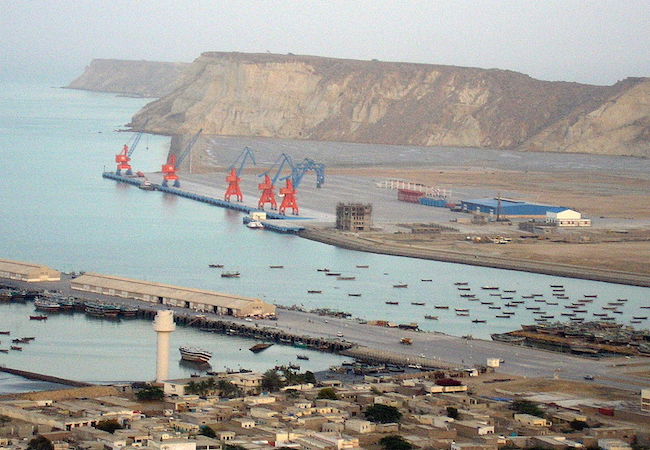
By Shahzadi Tooba Hussain Syed
The ‘game changer’ and the ‘fate changer’ also entitled with a ‘controversial project’. The CPEC project while it is underway started facing a variety of challenges that seek to undermine its beneficial impact for all the stake holders. The main issues are the concerns of Gilgit-Baltistan KPK and Balochistan.
CPEC projects were actually initiated with the construction of the Gwadar Port by the Chinese and the up-gradation of the Karakorum Highway (KKH) entering Pakistan through GB. The GB concern is that it has never been formally integrated into the Pakistani state and does not participate in Pakistan’s constitutional political affairs. The Gilgit-Baltistan Empowerment and Self-Governance Order 2009, was passed by the Pakistani cabinet and granted self-rule to the people of Gilgit-Baltistan, by creating, among other things, an elected Gilgit-Baltistan Legislative Assembly and Gilgit-Baltistan Council. Gilgit-Baltistan thus gained a de facto province-like status without constitutionally becoming part of Pakistan. Officially, Pakistan has rejected calls for full integration of Gilgit-Baltistan with Pakistan on the grounds that it would prejudice its international obligations with regard to the Kashmir conflict.
Another concern is that for GB, except for the KKH up-gradation no CPEC projects have been included in the overall plan. Surprisingly, no hydropower project has been identified for funding under CPEC. The government of Pakistan is focused on coal and LNG projects located in the plains of Punjab and Sindh. The Planning Division has oddly ignored the potential of hydropower projects. Along the KKH, the potential of run-of-the-river projects is phenomenal. At Bunji alone, a project of 7,400MW of energy can be established with two additional projects of 2,000MW each upstream from this location. These alone can meet much of Pakistan’s energy requirements. Hydro energy is environment-friendly, low-cost and economically viable; it can save billions of dollars.
Balochistan remains the Achilles heel of the CPEC. Baloch ethno-nationalist separatists remain the keenest opponents of Chinese investments in the province. Recently a new course of action has been initiated by some sub-nationalist parties that are alleging a change in the routes by the Federal government, that would only favor the eastern provinces of Pakistan and deprive the western provinces. Despite this allegation meeting no facts on the ground, the Pakistani and Chinese governments have tried to allay the fears, by interacting with the political parties that are making the allegations. There is also a stark need to engage the common man on the ground to stop the public from taking part in acts such as agitation that could halt work on the CPEC. In 2006, three Chinese engineers lost their lives in an attack claimed by the BLA in Hub, a town west of Karachi. A week before the Chinese president’s visit, at least 20 laborers were killed in cold blood by BLF gunmen in Turbat. Separatists routinely attack power and energy transmission lines. In order to specifically counter security threats to the CPEC, the Pakistani government established a ‘Special Security Division’ for Chinese workers.
With all the ‘corns’ the ambitious CPEC program is progressing. Mainly it has two components. It plans to develop a new trade and transport route from Kashgar in China to the Gwadar Port. The other component envisages developing special economic zones along the route, including power projects. The first-phase projects will receive $45.69bn in concessionary and commercial loans, for which financial facilitation to the Chinese companies is being arranged by the Silk Road Fund. These include $33.79bn for energy projects, $5.9bn for roads, $3.69bn for railway network, $1.6bn for Lahore Mass Transit, $66m for Gwadar Port and a fibre optic project worth $4m.
The prioritised, short-term projects involve over $17bn in investment. Apart from Karot, they include the upgrading of the 1,681km Peshawar-Lahore-Karachi railway line ($3.7bn); Thar coal-fired power plants worth 1,980MW ($2.8bn); development of two Thar coal mining blocks ($2.2bn); the Gwadar-Nawabshah natural gas pipeline ($2bn); imported coal-based power plants at Port Qasim worth 1,320MW ($2bn); a solar park in Bahawalpur worth 900MW ($1.3bn); the Havelian-Islamabad link of the Karakoram Highway ($930m); a wind farm at Jhimpir for 260MW ($260m); and the Gwadar International Airport ($230m).
Pakistan Chinese friendship has been hailed as” higher than the mountains, deeper than the oceans, sweeter than honey, and stronger than steel “. As China’s friend, it is up to Pakistan to deal with issues in appropriate way because China is having huge investment. Government should consider all the concerns of the stakeholders. In Balochistan specially the government must engage the local dissidents in a dialogue process, and bring them back into the national mainstream. A combination of Diplomacy, Intelligence networks, Economic measures and Military tools can be used to implement that ‘route of prosperity’.




